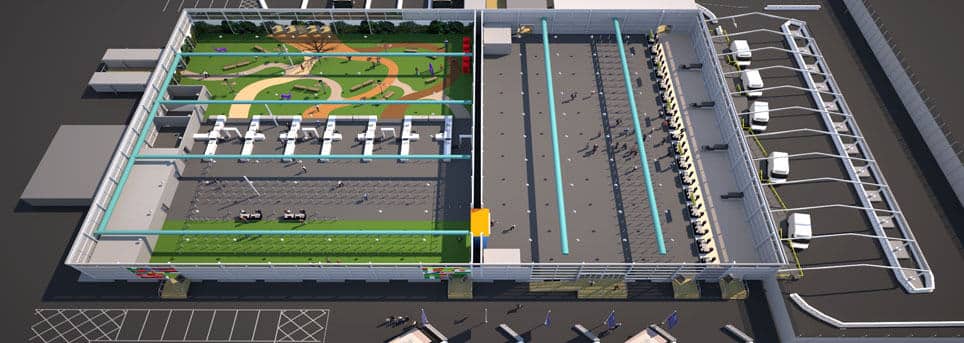The Challenge
We were engaged by Gebler Tooth Architects to predict capacity and usage of the London 2012 Pop Up temporary terminal. Solely for use by athletes in the run up to, and departing, the Games, AiQ worked with multiple stakeholders in order to plan, simulate and organize check in facilities for the thousands of athletes leaving London after the Games had ended.
Between Terminal 4 and the Cargo centre, a temporary building (designed by Losberger) provided 28 check in desks, security screening and more for the thousands of athletes, all within a unique themed London experience.
This unprecedented high level of passenger and baggage demand proved to be a unique challenge. We had to provide check in facilities for the thousands of athletes after the games had ended, within a two-day window for them leaving the athlete village and returning home.
The Solution
Using our unique simulation software and our experience in dealing with stakeholders, we were able to provide capacity planning and solution for dealing with thousands of athletes and their bags. We devised a new process for both, allowing the athletes to check in beforehand at the village with their bags. Their bags were then taken by lorry, screened and stored overnight at Heathrow before the athletes had even left the village.
This involved planning and predicting the huge number of coaches required for athletes and lorries for bags, timings for their arrivals, and how the bags would be handled and stored safely, temporarily, until it was time for them to be placed on the relevant aircraft.
AiQ had to solve the problem of how to store these 7,000 bags, and then screen them, within the limited space of Heathrow. This involved in-depth negotiation with the Department of Transport and their relevant counterparts overseas (as the bags were effectively crossing boarders unchecked), every ground handler and airline working within Heathrow, and the MUP and FCS plans. This was the largest stakeholder integration exercise ever undertaken by Heathrow.
The Benefit
With our experience in handling stakeholders and managing capacity within both large and sensitive operations, this process was faultless and provided athletes with an overwhelmingly positive return experience from London 2012. Our stakeholder management improved efficiency within the temporary activities, provided a great passenger experience and case study for the airport and broke ground in the way that bags and check in can be managed in difficult circumstances.
This highly sensitive international activity was managed by us because of our outstanding track record of working with multiple important stakeholders successfully, finding capacity where there is previously thought to be none and managing projects hands on to their completion.
- Stakeholder integration and acceptance
- Integrated approach
- Reduced congestion during times of unprecedented demand
- Enhanced the use of space within temporary buildings
- Prevented unnecessary investment costs
- Smooth efficient operations throughout
- Improved passenger customer service and airport experience
- Efficient communications and decisive management


